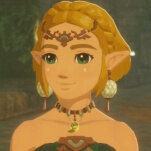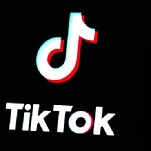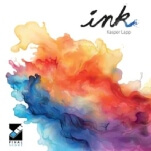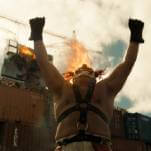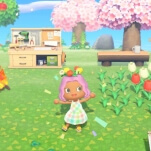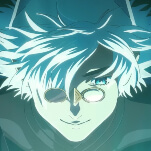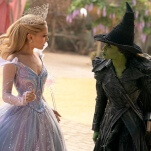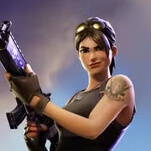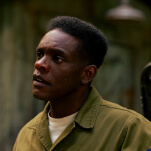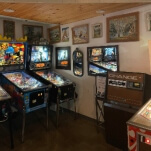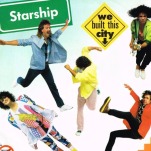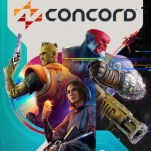Twenty years ago, video games were led by icons like Mario and Sonic and widely perceived as nothing but cute characters in colorful worlds. Ten years ago, public perception shifted toward hard-edged gritty shooters, driven by series like Call Of Duty and Gears Of War. Now, Nintendo asks—like the precocious young girl in a commercial for taco shells—why we can’t have both in the same package? Its answer is Splatoon, a shooter about adorable squid children covering the world with dazzling paint.
Nintendo made a game that is, ostensibly, about going online and shooting other players with guns—except, in the Nintendo tradition, it’s not really. Winning or losing has more to do with painting the town your own color of ink; “splatting” members of the opposing team out of existence only slows them down. The conventions of team-based warfare are maintained, but Splatoon injects enough whimsy to make everything feel fresh and accessible—a candy coating to make the bitter pill of combat easier to swallow.
The arenas are joyous and fashioned after skate parks and shopping malls. The weapons are playful, resembling plastic water guns and comically oversized paintbrushes. Even scorekeeping is lighthearted. An overweight cat with fur shaded to resemble a bow tie and suspenders does all the tallying. Battles are frantic tugs-of-war, but at a brief three minutes each, they’re never overwhelming. Possibly the most delightful evolution in combat, though, is the way you traverse the battlefield. You can transform from your childlike human form to a squid, dive into the ink, and swim through your team’s color to skate across the arena at high speeds.
Nothing kills the fun of playing with strangers on the internet quite like one player overpowering and slaughtering the rest, so Nintendo has gone to great lengths to balance all of its weapons. The simple handguns available from the start are just as useful as the fancier blasters unlocked later on, though both offer their own nuance and require some practice. Weapons can’t be upgraded to become stronger or faster, but every new article of clothing comes with at least one perk to improve your character’s abilities. High-top boots could make your bombs fly farther. Glasses might make you swim faster through ink. A polo shirt could bring you back into the fray more quickly after getting splatted. Changing into different duds to gain its abilities to help on a specific map can be more strategically vital than changing your weapons, and as clothes gain new skills with experience, frequent trips to the shopping mall for new outfits can make a huge impact.
As it hails from the Nintendo team responsible for the clothing-conscious Animal Crossing, Splatoon’s eye for fashion makes perfect sense—as does the abundance of aquatic puns. From shopping for weapons at the Ammo Knights store within the Booyah Base shopping mall to news reporters/pop idols Callie and Marie, the world of Splatoon is stuffed with opportunities to stop fighting and smile, if only for a moment, and appreciate its friendliness. This might be a game about fighting tiny wars, but it never veers far from being jubilant and festive.
Most disarming, perhaps, is the game’s Miiverse integration. Remember Miiverse, the family-friendly social network Nintendo launched alongside the Wii U? Player-created drawings posted in the Splatoon Miiverse community will sporadically pop up within the game world, either on billboards or as graffiti tagged onto a wall. There’s an inescapable sense of pride when you run into the field of battle and see either your own doodles or those of a friend. The desire to protect this terrain—and your handiwork—from your opponents becomes more personal. (Full disclosure: My appreciation for this feature is likely compounded by the fact that I produced the most-liked drawing in the community during the review period.)
There’s also a short-but-sweet single-player adventure. A series of obstacle courses teach players creative uses for their ink. The challenges crib more than a few notes from the Super Mario Galaxy games with floating islands, fantastic contraptions, gravity-defying ink swims, and battles against enormous, cartoonish bosses. The clever adventure is over too quickly, but the amount of offline action balloons if players purchase the game’s exclusive amiibo, which effectively act as downloadable expansions that look cute on your bookshelf. Completing the campaign or any of the amiibo missions unlocks exclusive gear for use online, a steady reminder that everything leads back to multiplayer.
And this is where Splatoon will ultimately live or die: its online community. Never before has Nintendo made a game that so heavily relies on an active community of players connected to the internet at the same time. Both Super Smash Bros. and Mario Kart have had lively online scenes, but they could still be enjoyed offline or with a few friends and a handful of computer-controlled characters. Splatoon, on the other hand, requires eight human players gathered from across the internet to play its most significant portion. If that community goes away, or if there are any problems with Nintendo’s online infrastructure, Splatoon could be little more than an attractive waiting room.
We’ll check back on how the game evolves post-launch with a future What Are You Playing This Weekend?, but for now, it’s clear that Nintendo has succeeded in crafting a new, idiosyncratic take on the modern shooter. The bright colors, peppy music, and short bursts of action make it fun and easy to keep coming back. It’s the sort of no-brainer we should have been playing for a long time now, and just like getting those hard and soft taco shells in the same box, it’s sure to be a crowd pleaser.
SplatoonDeveloper: Nintendo EAD Group No. 2
Publisher: Nintendo
Platform: Wii U
Price: $60
Rating: E10+
